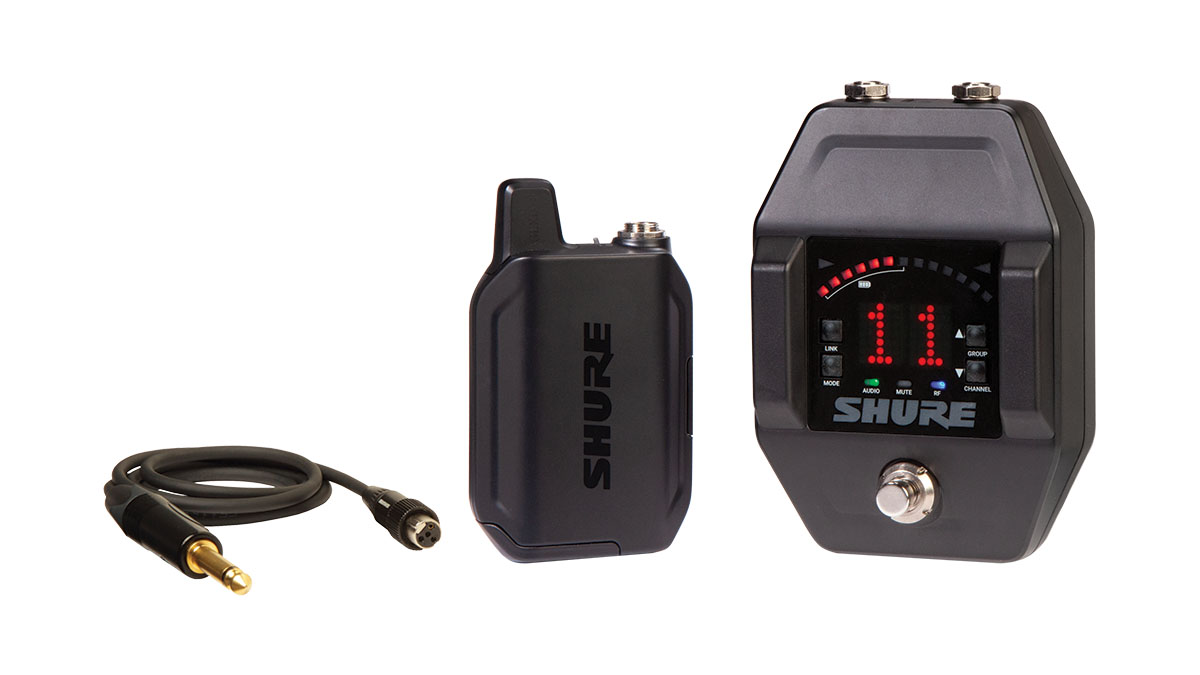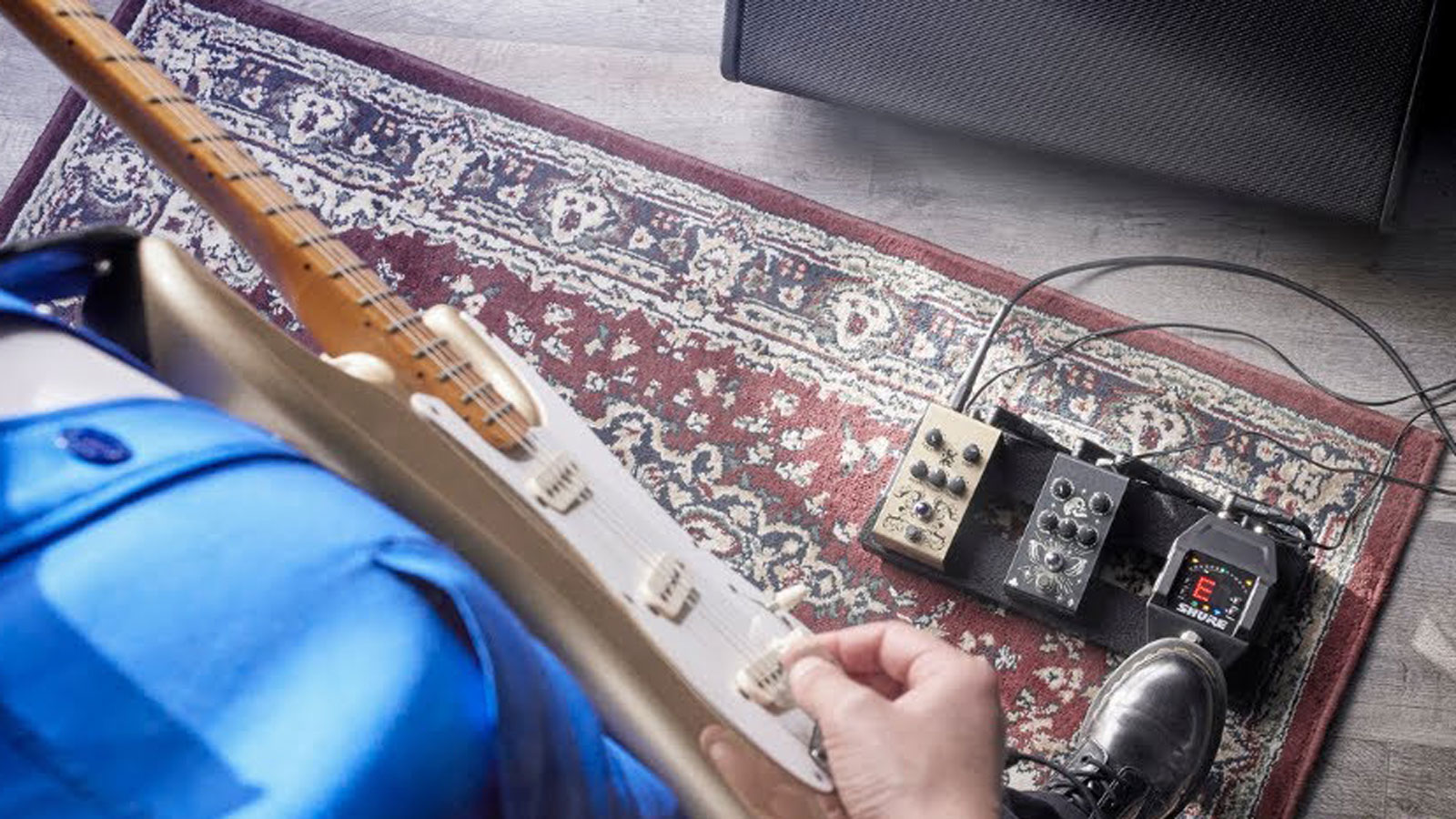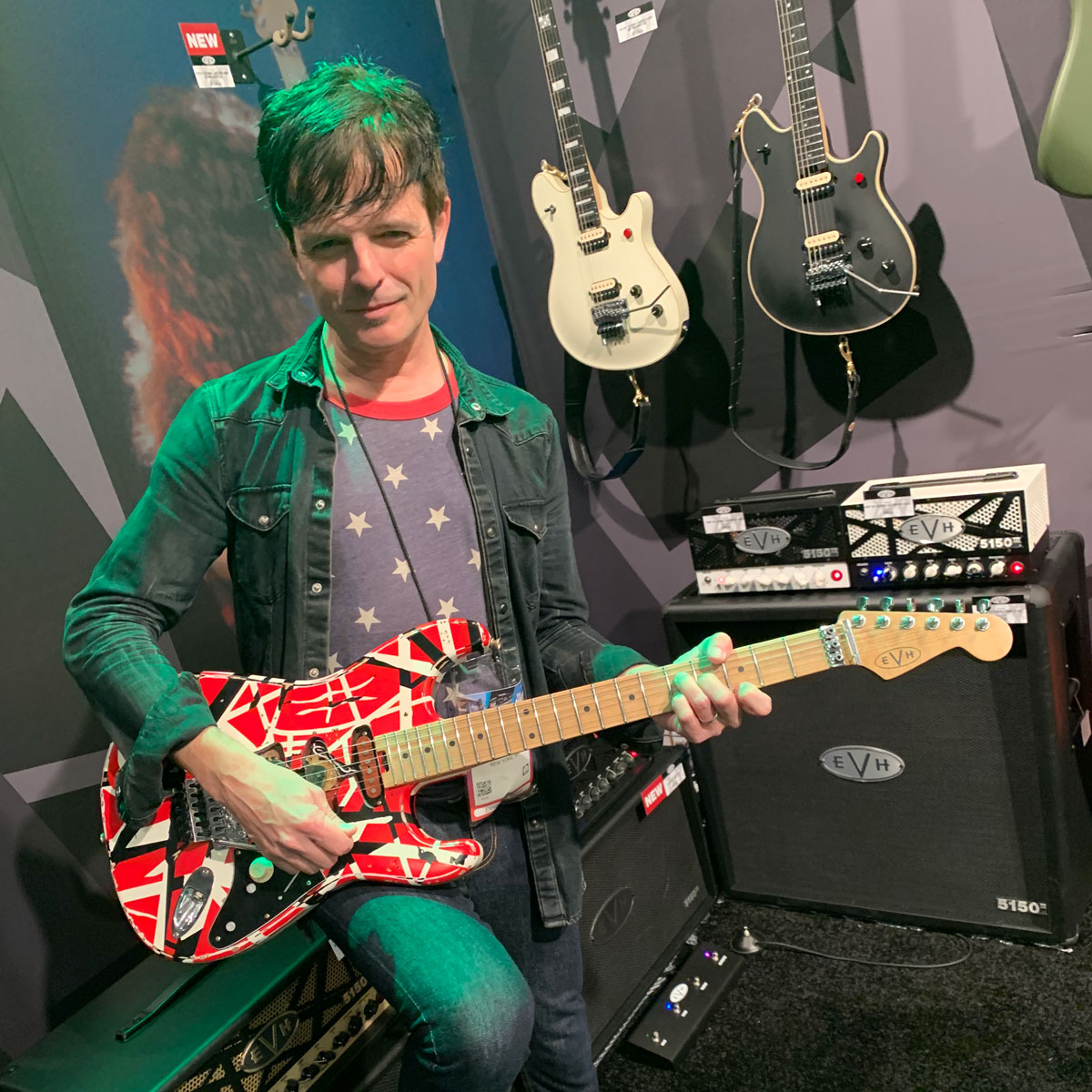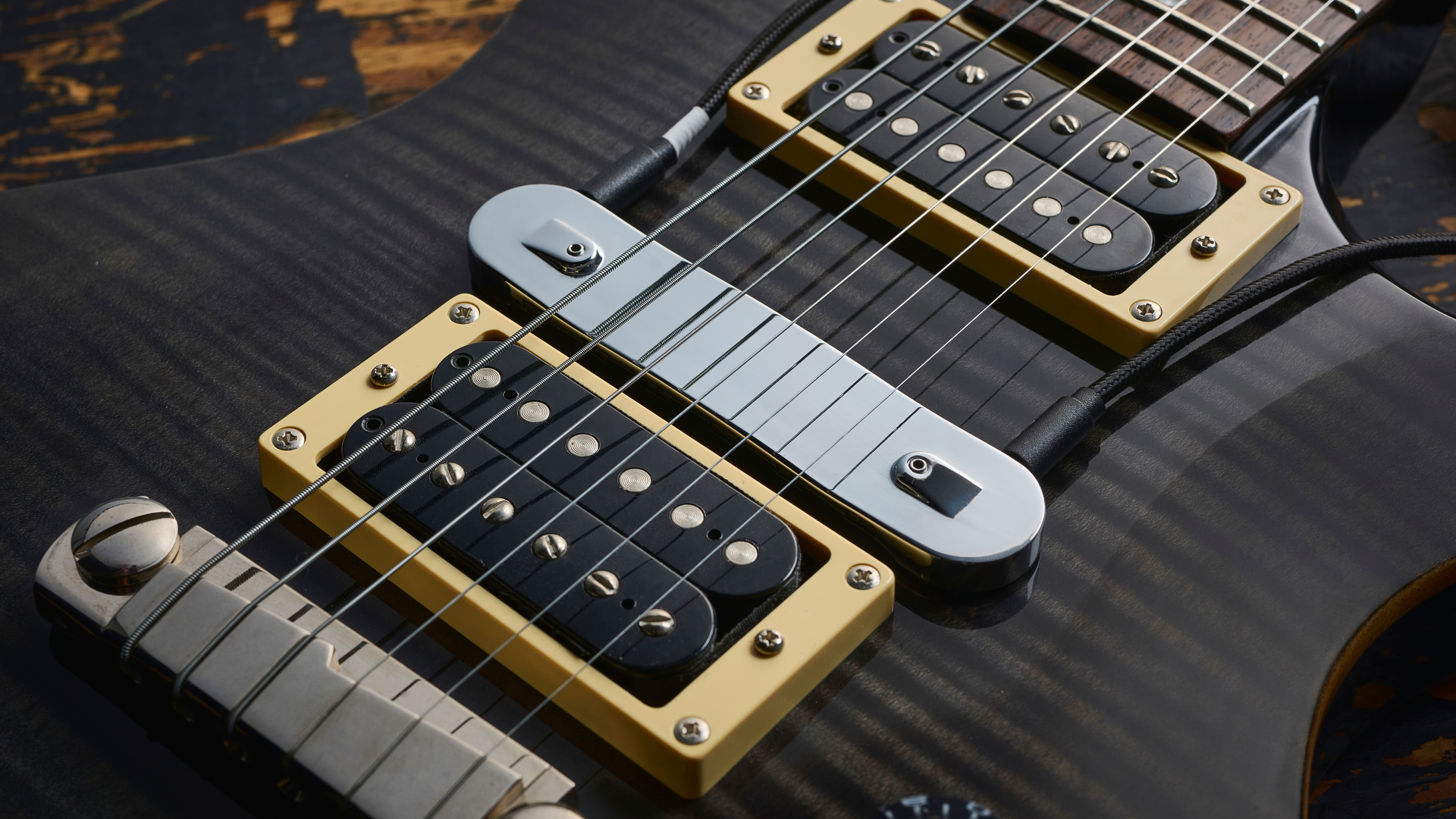Guitar World Verdict
With a pain-free setup and operation, up to 12 hours of battery life, super-tough build and pedalboard-friendly format, the GLXD16+ is a no-brainer for those looking to ditch the guitar cable.
Pros
- +
Setup is easy and quick.
- +
Well-built and pedalboard friendly.
- +
Battery life is decent and clearly monitored.
- +
Quick charge offers 1.5 hours from 15-minute charge.
Cons
- -
Nothing unless you love cables.
You can trust Guitar World
Shure needs no introduction as an unparalleled leader in audio innovation and as the industry standard in microphones and guitar wireless systems for live performances. Outside of their renowned microphones, Shure’s touring-grade wireless systems have always been priced slightly out of reach for most non-professional guitarists and bassists.
But now, Shure aims to change all that with the rollout of their new GLXD+ Dual Band Digital Wireless System, which is available in rack-mount, tabletop and guitar pedal receiver versions.
Of course, this wireless system applies to vocalists and presenters as well, with a wide selection of lavalier, headset and handheld microphone options. But as a six-stringer, I’m here to focus on the pedalboard-friendly GLXD16+ Digital Wireless Guitar Pedal System, which has not only given me untangled freedom in my gigging life, but I believe it to be a frontrunner for its rugged reliability, ease of use and crystal-clear signal transparency.
Housed in indestructible metal enclosures, the GLXD16+ guitar pedal receiver and transmitter (with a locking 4-pin mini connector Neutrik cable) are designed to work seamlessly for players who favor a wireless system integrated within their pedalboards. What makes Shure’s GLXD+ range unique is that it capitalizes on doubling available bandwidth with its Dual Band system that operates in the license-free 2.4GHz and 5.8GHz bandwidths.
The result of this remarkable technology is it removes all guesswork by automatically scanning for and selecting the clearest available frequencies to prevent any signal interference and dropouts.

The guitar system also addresses improved battery life by offering up to 12 hours of operation (with its included lithium-ion battery that can be conveniently charged via USB-C from the transmitter), and even more imperative in times of a gig crisis – it can provide 1.5 hours of use from a 15-minute quick charge, which should last longer than your setlist.
In addition, the pedal receiver includes a tuner (with needle and strobe modes) and a 1/4–inch input (for cabling in) and operates on 9V DC power. And in case you’re wondering, two or more transmitters can be linked to the receiver, allowing for uninterrupted instrument swaps.
From setup to play, what makes the GLXD16+ so damn appealing is that it’s done within seconds. With the receiver active and the transmitter fully charged, simply turn on the transmitter till the green LED flashes, and presto! – you’re up and running with a clean signal, which to my ears, sounds clearly enhanced.
You can monitor battery life from the receiver’s battery meter (even if you get to the last LED, you still have 30 minutes of playing time), and if you need further adjustments there are buttons for Mode, Channel and Group.
The tuner is super-accurate and can be set for mute or always-on, and the system allows for locking the receiver to save changes you’ve made. There’s much more, but hell, I’ve already made this my go-to wireless system.
Specs
- PRICE: $499 / £544
- TYPE: Wireless guitar system
- FEATURES: Dual frequency operation (2.4GHz and 5.8GHz); WA305 guitar cable included; onboard tuner, up to 12 hours battery life
- DETAILS: Includes guitar pedal GLXD+ Dual Band receiver and bodypack transmitter
- CONTACT: Shure
Paul Riario has been the tech/gear editor and online video presence for Guitar World for over 25 years. Paul is one of the few gear editors who has actually played and owned nearly all the original gear that most guitarists wax poetically about, and has survived this long by knowing every useless musical tidbit of classic rock, new wave, hair metal, grunge, and alternative genres. When Paul is not riding his road bike at any given moment, he remains a working musician, playing in two bands called SuperTrans Am and Radio Nashville.
“The original Jordan Boss Tone was probably used by four out of five garage bands in the late ’60s”: Unpacking the gnarly magic of the Jordan Boss Tone – an actual guitar plug-in that delivers Dan Auerbach-approved fuzz
“This is a powerhouse of a stompbox that manages to keep things simple while offering endless inspiration”: Strymon EC-1 Single Head dTape Echo pedal review












